“Do you know what it feels like when the rain is coming? Our hearts beat faster.
May 31, 2023
When I moved here (1976), it was beautiful. It rained; it was normal. My children used to play around by the mangrove, nature was a wonderful thing. As human beings, we have forgotten that people and the environment are not separate things. We know what that feels like when it happens… We talk about climate change, but what is it? It is the imbalance between people and nature.” – Participant from a focus group in Juan Díaz, Panama City.
Now in June, as we transition into the rainy season, the landscapes get greener, and with the first heavy rains of the year, some may love having a coffee watching the rain from the window, while for others, it means preparing for the worst: floodings. 73% of disasters in the Province of Panama from 1933 until 2020 are [directly or indirectly] related this event, particularly in its metropolitan area (UNDRR, 2020).
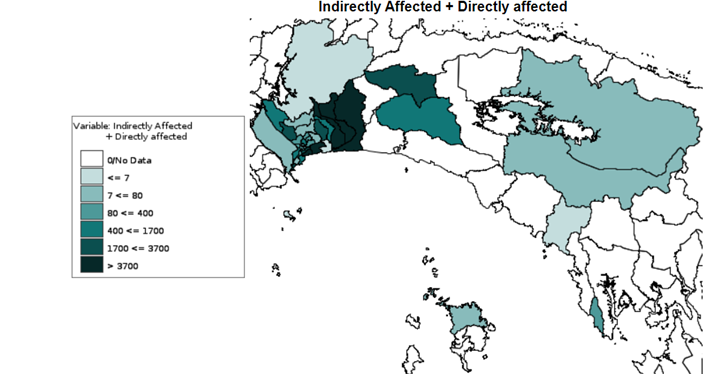
Figure 1 - corregimientos in Panama City directly or indirectly affected by floodings from 1933 to 2020.
But what is the history of this problem from the eyes of those most affected by it? In this blog, we compile a series of learnings and reflections from the lived experiences of the community of Ciudad Radial, district of Juan Díaz in Panama City.
Every change starts with a signal
Back then (1998), we were very active. We fought to have electricity, water and decent roads. We paid for this land; we were strong as a community. I remember the day we heard the machinery by the mangrove, a group of us then to ask what that was about. It was the beginning of the Corredor Sur.
Before the construction of the Corredor Sur, one of the main highways connecting the Eastern metropolitan area to the city center, floodings were not a rare event. However, the unplanned growth of Panama City has been exacerbating its effects (MUPA, 2017). The construction of this highway was one of the signs of dramatic changes that the landscape of the Juan Díaz River basin has experienced “dikes were built and when the rains began, they didn’t remove them, and we flooded.”
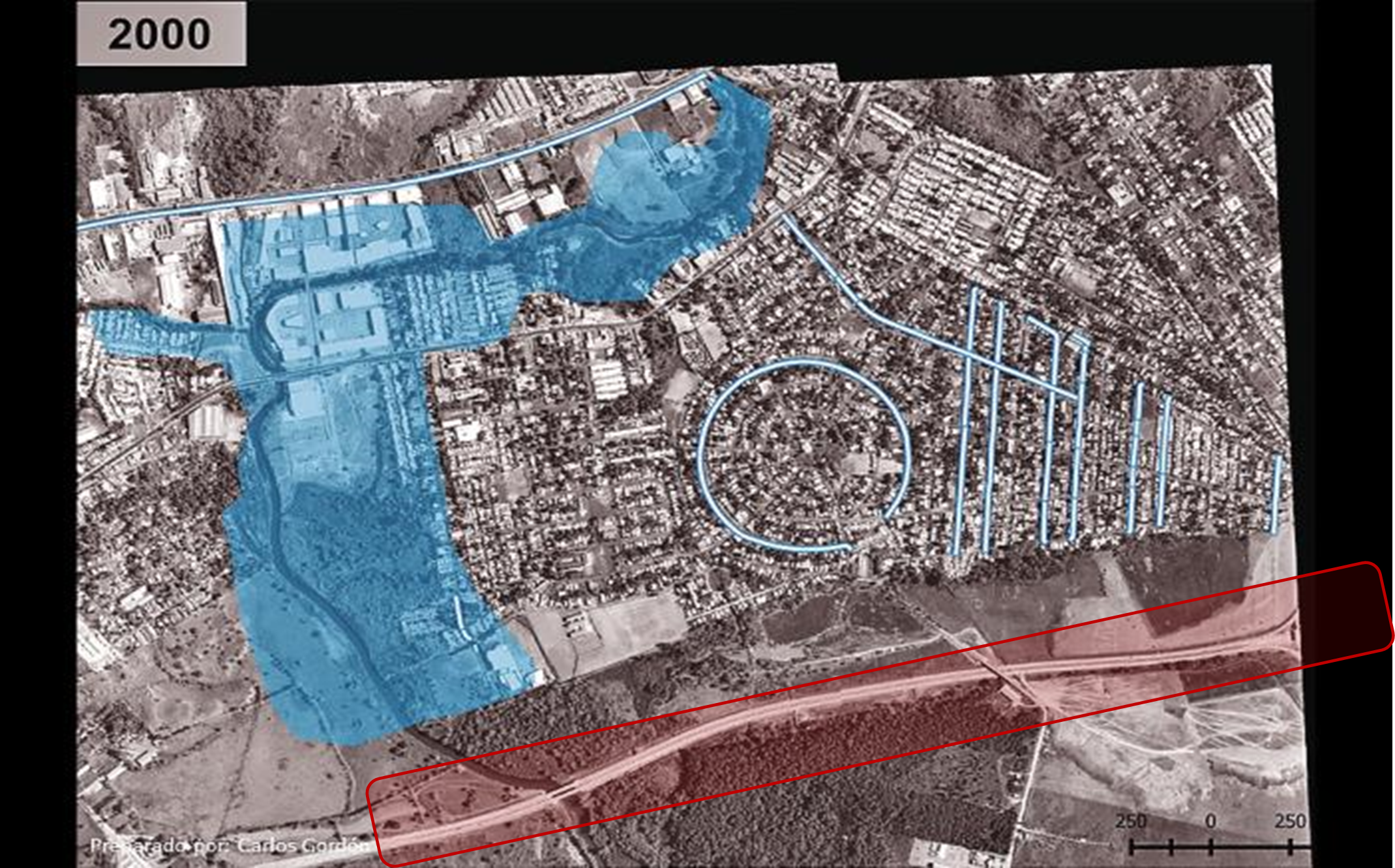
Figure 2 - lower Juan Díaz river basin and the flooding print by the year 2000, it already shows the Corredor Sur (red).
Certainly, Panama City has changed, not just in its urban landscape, but also in the way people and communities relate to each other. When the events happen, there is mobilization, but after some time, the momentum is often lost. “We have grown older. We are the elders now. In the past, this meeting space was full, now people have lost interest in their community.”
The continuous impacts and losses in communities create concerns has created a sense of frustration and grief, a mix of memories of loss from previous floodings and the fear and uncertainty of what could happen in the future.
How is it possible that me, and 84 years old woman, after working hard all my life and everything I have been able to do, end up my life in this way? How is it possible that the end of my days looks like this, fearing to lose my house in a flooding?”
The expansion and tensions of an unequal urban footprint
The experiences of this community are linked to a broader context, where rapid rural-urban migration starting in the 1960s and the unplanned growth of the city, not just in terms of the internal migration but also foreign investments due to the global trade hub that the city represents, has led to a complex set of dynamics which has led to a dual city of very stark inequalities (MUPA, 2017).
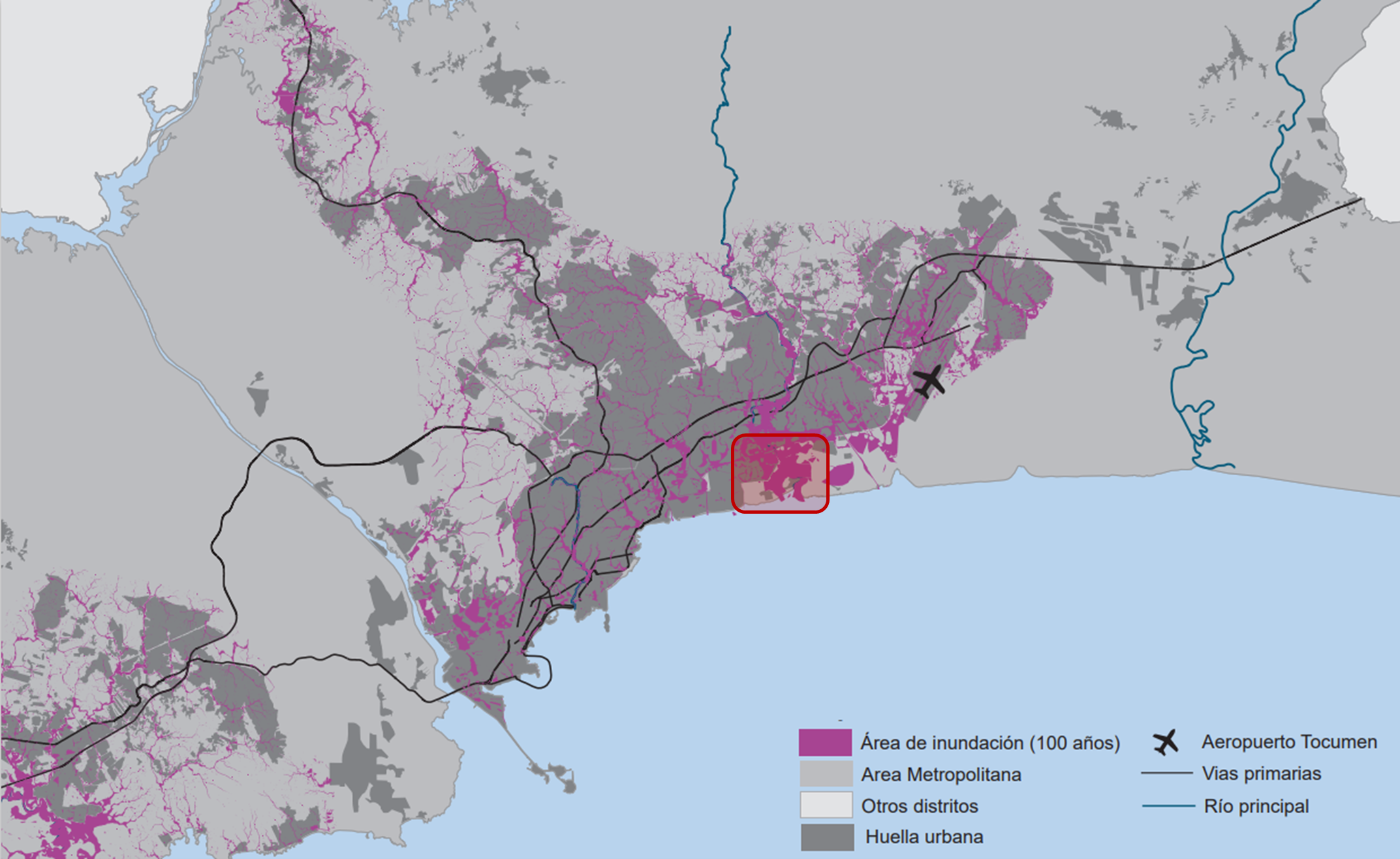
Image 3 - Urban print of Panama City's metropolitan area and the flooding print of 100 years, highlighting the lower Juan Díaz river basin in red.
These dynamics also show the tensions that emerge when it comes to the (unequal) expansion of the urban footprint, with regulations that are not enforced and results in pressures and deteriorates the river basins, wetlands and biodiversity of the city (IH Cantabria, 2016).
Moreover, the inequalities of Panama City deeply influence that the constant floodings disproportionally affect the most economically poor (MUPA, 2017) and older settlers on this river basin. “Every year there is a new construction and, when the rainy season begins, we wonder where it will hit us next.”
These risks of flooding events in Panama City go hand in hand with the rain patterns with the months of September and October being the rainiest; within this season, tropical depressions, storms and hurricanes are very common (IMHPA, 2022).
“Do you know what it feels like when the rain is coming? Our hearts beat faster.
September and October create a lot of tension, those are the days of the heaviest rains in Panama. One that lives in the memories and skins of many people in Juan Díaz is the one of September 2015.
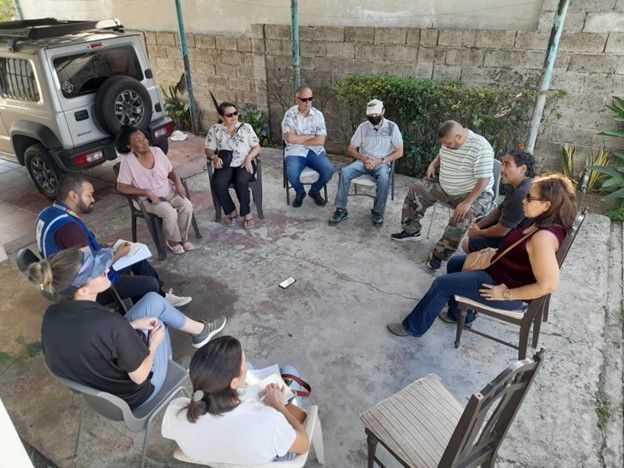
Image 4 - focus group with community members from the neighborhood of Ciudad Radial, Juan Díaz
"It started as a beautiful day, very sunny, but it started to rain by the mountains and then it started to rain down here. The tide was high and well, everything happened at once.”
The memories of impotence from that flooding, of seeing backyards filling with water, the traffic of cars trying to leave the area, the honking, the despair and the chaos emerged vividly from the voices of participants. But not just their individual concerns, there were also the care for the most vulnerable.
“I remember thinking of the elder that live alone in the neighborhood, there were also people with disabilities that were at risk. Some just had enough time to save their dogs.”
In the midst of that, the memories brought up the recurrent questions of “To go where? To ask who for help?” Some decided to stay in their homes and do the best they could to save themselves, their loved ones and their belongings, it got dark, it was nighttime and for some, it became a “night trauma”.
“When it rains at night, I can’t sleep. It is a psychological problem that this neighborhood is living.”
After that infamous flooding of 2015, participants described the aftermath as a ‘zone of disaster.’ Some people decided to move out “I had to migrate from my house after 2015, it is bitter to say it, that flooding is the reason why I left.” For others, there is a sense of hopelessness “We don’t even paint our houses anymore. Why would I? When it floods all that is lost.”
We are the sensors: Artisanal Early Warning Systems
The disaster of 2015 was the worst that participants could remember, but after that, other floodings have occurred – and the risk persist. The National Civil Protection Service (SINAPROC) installed alert systems, but there was no clarity in the community on how exactly those work.
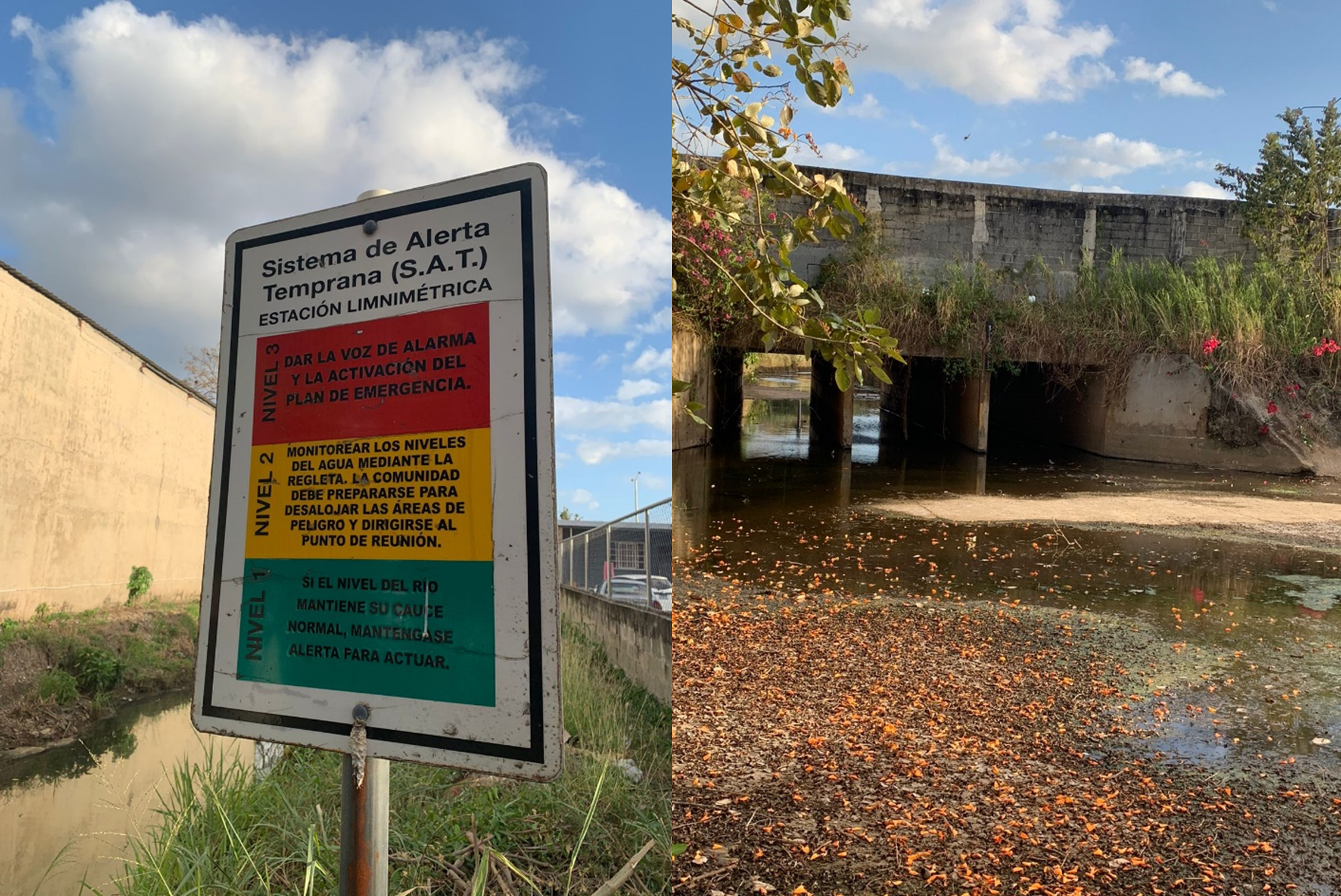
Image 5 - early warning system in the neighborhood of Ciudad Radial, Juan Díaz
Different versions about how the existing systems work came up “they were supposed to make a sound, but we did not hear it, people in the 22nd street said they heard it.” Some neighbors created what they call their ‘artisanal’ early warning systems, given that the ones installed did not respond to their needs.
So, people became the sensors “we use WhatsApp to communicate when it rains, we are the sensors, we are meteorologists now. We look at the tides, we look at SINAPROC alerts. We have learned that when the sky is light blue, we are good, but if it is grey in the mountains, the water will come."
In the neighborhood, people know where the elder is, who has a disability, and, who is the most vulnerable in the case of a flooding. However, community members also see opportunities to act more collectively “we need to find a way to encounter with each other more physically and virtually.
"We need a mechanism to keep the community informed, I saw WhatsApp was sending alerts and messages to support what happened with the earthquake in Turkey. There are new options that can help us here too.”
What is next?
The stories of the group of neighbors from Ciudad Radial make evident that climate change is not just about climate change and, despite a diversity of studies and actions proposed and taken to face the issue of floodings, it is a recurrent event that the communities carry on its shoulders when it happens and lacks a systemic approach that responds to the complexity of this problem.
These insights and the recurrent collective intelligence spaces seek to generate a landscape view of the problem and co-design a prototype of community-based early warning system for flooding that builds on the lived experiences, knowledge and practices of local communities. Stay tuned for our next blog!
The UNDP Accelerator Lab in Panama, as part of the Collective Intelligence for the Climate Crisis process conducted a series of ethnographic activities to prototype a human-centric early warning system (EWS) for floodings in the metropolitan area of Panama City with the potential to be replicated or scaled in the country.

 Locations
Locations